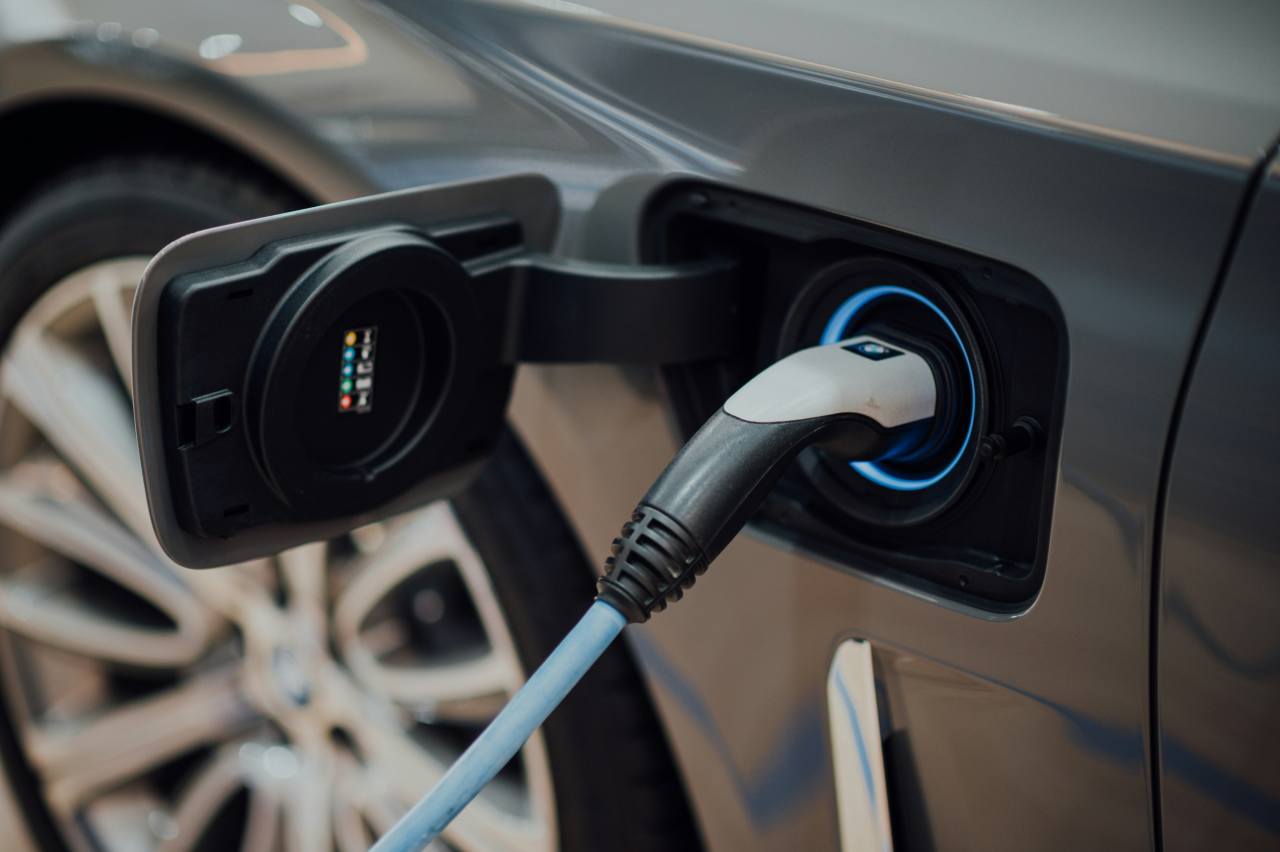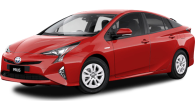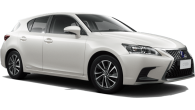Long the domain of first-car buyers and suburbanites winding down on their driving years, the Toyota Yaris is now hybrid-only, and is a far cry from the $15,000-or-so cheap and cheerful staple it once was.
But with its fourth generation a few years into its lifespan, the Yaris is trying to be more than just a basic A-to-B runabout. In fact, the ZR we have on test is more expensive than an entry-grade Volkswagen Polo.
Does more than $30,000 of light hatch really feel worth it once you’re behind the wheel, or are you better off pocketing almost $10,000 to save on one of the thinning pack of rivals?
Toyota Yaris 2025: Zr Hybrid
| Engine Type | Inline 3, 1.5L |
|---|---|
| Fuel Type | Unleaded Petrol/Electric |
| Fuel Efficiency | 3.3L/100km (combined) |
| Seating | 5 |
| Price From | $34,530 |
| Safety Rating |
|
Price and features – Does it represent good value for the price? What features does it come with? 6/10
6 / 10
In the grand scheme of new-car pricing, $34,530 before on-road costs doesn’t sound like a lot of money. That’s how much the Yaris ZR is new.
But compared to other top-spec trims in rival models, it’s one of the most expensive in its class.
It battles the Mazda2 ($28,190 for the top-spec GT), Suzuki Swift ($29,490 for the Hybrid GLX), MG3 ($32,819 for the Essence Hybrid+) and VW Polo ($34,790 for the Style). Only the Polo is more expensive as its top-level variant.
.jpg)
Regardless of the size of the car, the Yaris ZR is missing a couple of extra things that could make it feel properly top-of-the-range.
It’s not missing the essentials though. After an update in early 2024 it comes with a decent 8.0-inch multimedia display, wireless Apple CarPlay and Android Auto, plus an adequate six-speaker sound system.
On top of those Yaris standards, the ZR gets a 7.0-inch digital driver display, keyless entry, a head-up display, 16-inch alloy wheels, automatic air-conditioning with an air purifier and ‘premium cloth fabric’ for the sports-style seats.
It could do with a wireless phone charger and perhaps even leather seats - the latter available in the more affordable Mazda2 GT. Cloth seats and a cable to charge your phone don’t feel very ‘top-spec’. There are, however, two USB-C charging ports for doing so.
Premium paint colours (anything that’s not Glacier White) are $575, while the two-tone look with the black roof (available with Coral Rose, Bronx Bronze and Massive Grey) is $775. Our test car is Massive Grey with the two-tone black roof.
Design – Is there anything interesting about its design? 7/10
7 / 10
The Yaris’ best selling point could very well be its looks. While there are a lot of differences between the ZR and the bespoke GR Yaris hot hatch, they do look similar, especially from the rear.
Any small car like this is going to have an element of ‘cutesy’ about it, but the Yaris does well to look like a more sporting car than its rivals.
The grille is the only big design change Toyota made as part of its most recent update in early 2024. It's a new design that’s finished in partial dark chrome for the ZR.
At the rear, the ZR gets a spoiler above the rear window, helping it look a little more like its Gazoo Racing cousin, as does the block of black trim flanked by the tail-lights and the ‘Yaris’ and ‘ZR’ badges.
Even its front lower bumper would look reasonably at home on a more powerful car if the plastic trim at the sides had actual air vents rather than being closed off.
Inside, things are less exciting. The ZR’s interior seems plasticky and its grey cloth seats do nothing to make the space feel premium.
The ‘two-level’ look on the dash and the arrangement of the multimedia screen and climate controls below it feel outdated, but the cabin is (perhaps more importantly) clear and functional.
.jpg)

Practicality – How practical is its space and tech inside? 8/10
8 / 10
For all its grey trim, the Yaris actually proves a very usable space for its size. The two front ‘sports’ seats are quite comfortable with decent bolstering.
The steering wheel is nicely shaped, and big clear buttons (like most of the cabin) mean controls for all the car’s functions are obvious.
The digital driver display is customisable in terms of its style, but the information you might need is easy to find and not distracting while you’re trying to concentrate on the road. The head-up display also helps there.
.jpg)
The physical climate control panel isn’t exactly ‘pretty’ but it’s infinitely better than needing to navigate through the screen above.
That screen itself is also easy to use. Toyota’s multimedia systems can feel outdated but the upside is there aren't loads of submenus to get lost in.
Storage is well covered: two cupholders are out of the way of elbows, plus a little storage space behind that between the front seats. There’s a small space behind the gear shifter for a phone, a couple of small 'shelf' spaces above and in front of the passenger, and there are decently spacious door card places for water bottles and the like.
.jpg)
In the second row, behind my own (178cm) seating position, ‘spacious’ is less applicable. It’s not surprising that the second row in a light hatch would be a little tight for an adult, but it’s not restrictive and some kindness from the front passengers could see the back seats become a comfy place for a sub-60-minute trip.
There’s no centre armrest, but each door has a water bottle holder and the aforementioned storage spot between the front seats is accessible from the second row.
Behind the rear seats, there’s a 270-litre boot which is decent for its class. The non-hybrid Mazda2, for example, has 250L.
The boot floor can be lifted to sit flush with the seats when folded down, and underneath there is a space-saver spare tyre, which is a huge plus.
Under the bonnet – What are the key stats for its engine and transmission? 7/10
7 / 10
The Toyota Yaris is a hybrid-only offering, with all variants powered by a 1.5-litre three-cylinder petrol engine that makes 67kW/120Nm and a 59kW/141Nm front motor-generator.
Toyota quotes a combined output of 85kW and doesn’t specify a total torque figure.
The electric motor draws power from a 4.3Ahr lithium-ion battery and is able to drive under electric-only power at low speeds.
.jpg)
Efficiency – What is its fuel consumption? What is its driving range? 9/10
9 / 10
Toyota claims a 3.3L/100km fuel economy figure under the combined WLTP cycle, and says it produces 76g of CO2 per kilometre.
With its 36-litre fuel tank, theoretically the Yaris should be able to travel almost 1100km on a single tank, though even Toyota admits the 3.3L/100km fuel economy figure was obtained in a lab (as is usually the case) and doesn’t reflect real-world driving.
For reference, on test the Yaris ZR didn’t display a fuel economy figure of more than 5.0L/100km during reasonable standard driving conditions.
.jpg)
Driving – What's it like to drive? 8/10
8 / 10
A series of factors that make the Yaris an excellent car for the inner-city also happen to make it engaging from behind the wheel.
Its small footprint and relatively low kerb weight are key to this, but it's also built on Toyota’s excellent TNGA platform which, in one form or another, underpins most of the brand's line-up.
It means the Yaris has characteristics that align with other Toyotas - it feels related to a Camry or a RAV4, even if it doesn't behave in the same way physically.
.jpg)
The Yaris is understated in how it behaves on the road during regular driving, quietly switching between hybrid and electric mode, rarely letting the engine get coarse unless you put your foot down for more power.
And while the Yaris isn't quick by any means, there's just enough urgency to get you out of trouble should you need it. It's not a drivetrain that encourages spirited driving, but if you should choose to do so you'll find some surprising capability in the way the Yaris is set up.
Steering that feels light and accurate day-to-day is handy when it comes to steering the Yaris quickly on twisting roads, and the platform underneath does well to keep the light hatch and its short wheelbase in check.
_0.jpg)
It doesn't feel like it's ready to 'bounce’ off bumps and uneven road surfaces like some similarly sized hatches did even a generation or two ago, and while one wouldn't imagine the Yaris hybrid is choice number one for a weekend driver, there's still fun to be had.
But in urban environments the Yaris is in its element, and its efficient engine and small footprint make it ideal for inner-city traffic and parking.
Warranty & Safety Rating
Safety – What safety equipment is fitted? What is its safety rating? 8/10
8 / 10
The Yaris ZR is pretty well stocked when it comes to safety features, more so than the lower variants in the range. Great for the ZR, a bit of a let-down for the others.
It comes with all the necessary kit including auto emergency braking (AEB) with a pre-collision safety system that “recognizes motorcycles and oncoming vehicles in addition to cyclists, pedestrians and vehicles ahead”.
It also has daytime intersection collision avoidance, daytime emergency steering assist, active radar cruise control and lane trace assist, auto high beam, road sign recognition, blind spot monitor, parking support, safe exit assist and a rear parking camera with parking sensors at the front and rear.
.jpg)
The Yaris also has eight airbags, which is a decent count for a light hatch. There are also ISOFIX points on the rear outboard seats.
In 2020 ANCAP tested the Yaris for a five-star result, though that result expires in December 2026 and the testing criteria has since changed to become stricter.
If you’re a driver who prefers minimal technological intervention (read: beeps and bings or the steering nudging you around) the Yaris’ safety kit does a very good job of remaining in the background unless it’s really needed.
Ownership – What warranty is offered? What are its service intervals? What are its running costs? 8/10
8 / 10
Toyota offers a five-year/unlimited kilometre warranty which covers the Yaris, as well as capped-price servicing for the first five years/75,000km - whichever comes first.
Intervals are 12 months/15,000km for servicing and each costs $250.
If servicing is undertaken at Toyota dealerships, Toyota extends the engine and driveline warranty from five to seven years. It also increases the hybrid battery warranty to ten years “as long as you undertake your annual inspection as part of routine maintenance according to the vehicle logbook”.
There’s also seven years of conditional emergency assistance related to car hire or towing expenses while Toyota is maintaining the car.
.jpg)
Verdict
The Toyota Yaris is as much car as many people should really need, and it's a refreshing antidote to the largely unnecessary shift towards SUVs as the ‘default vehicle’.
In the case of the ZR grade, the pricing could understandably be a reason you might consider an SUV instead. There are plenty of options for a similar price.
The problem with an SUV though is it will likely be less efficient and, due to physics, less agile and fun to drive.
Given the price and the fact that a couple of features are missing, the ZR probably isn't the variant to go for, but the Yaris is an overall solid foundation for a very convincing hatchback.
Pricing Guides







.jpg)
.jpg)
.jpg)
.jpg)
.jpg)
.jpg)
.jpg)
.jpg)
.jpg)
.jpg)
.jpg)
.jpg)
.jpg)
.jpg)
.jpg)
.jpg)
.jpg)
.jpg)
.jpg)
.jpg)
.jpg)
.jpg)
.jpg)
.jpg)
.jpg)
.jpg)


.jpg)





























.jpg)

.png)



